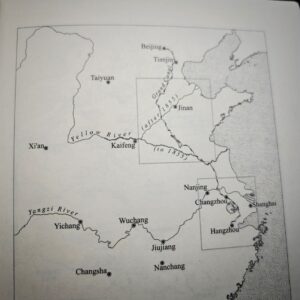
The Yellow River changed course drastically in 1855 during the Qing Dynasty’s Xianfeng reign.
From Kaifeng, it used to flow southeast (from 1194 to 1855) and emptied into the Yellow Sea south of the Shandong Peninsula.
Since 1855, it has flowed northeast into the Bohai Sea, north of the Shandong Peninsula.
The change was primarily caused by massive rains on 31 July 1855, which caused the Yellow River to breach the river’s dykes at a place called Tongwaxiang. This event is therefore known as the Tongwaxiang Breach.
Besides the heavy rains, another major reason is that the Yellow River carries a lot of loess from the Loess Plateau.
While this loess is fertile soil useful for agriculture, it sinks to the riverbed, causing the level of the river to be higher and higher than the surrounding lands.

Dykes had to be built to prevent the Yellow River from flooding the surrounding lands.
These dykes were neglected due to the Qing Dynasty’s preoccupation with the Taiping Rebellion.
On 31 July 1855, all three factors converged tragically, and the Yellow River breached the dykes, flooded the low-lying lands, and changed course, which resulted in deaths estimated from 200,000 to over a million.
The Yellow River’s course before 1194 was highly dynamic, shifting dramatically across the North China Plain over millennia.
LWH, Monday, 11 August 2025, 11.15 pm
